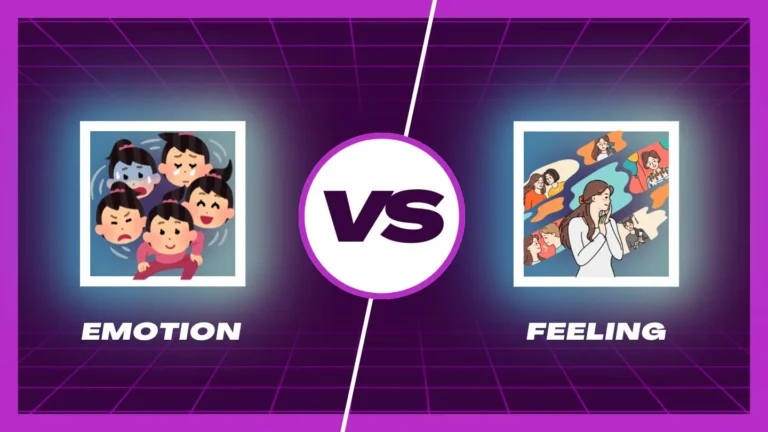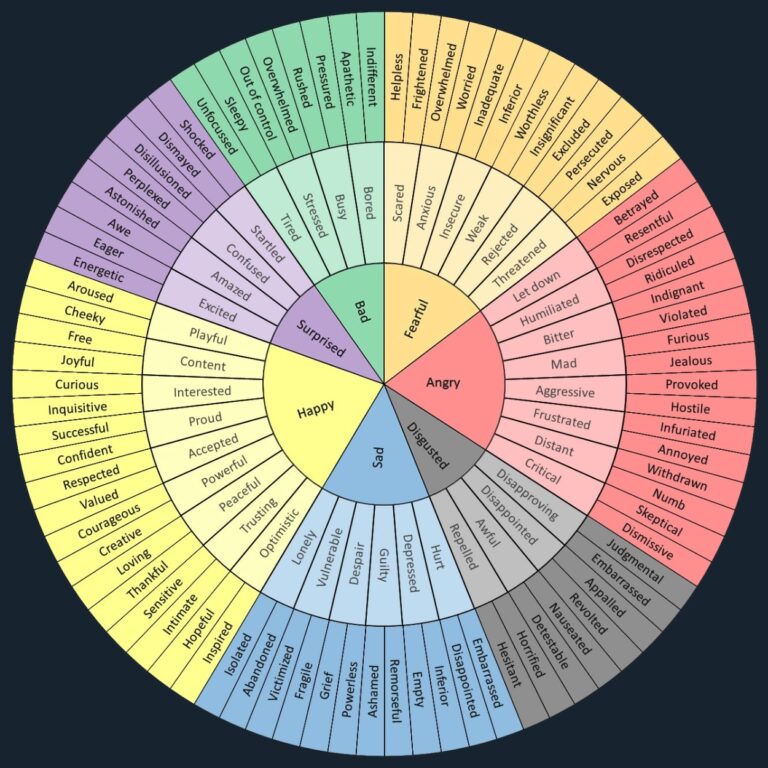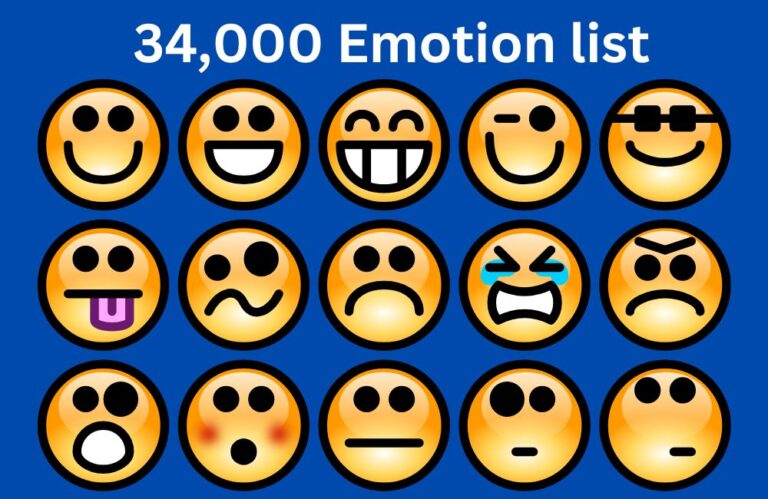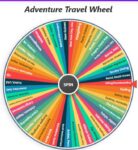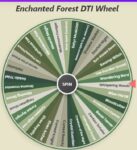
Young children typically recognize a few basic emotions like happy, mad, sad, and scared (Harter, S., & Buddin, B. J.). As they grow, their emotional vocabulary expands, helping them express more complex feelings. Emotions are essential to how we think, behave, and interact with others.
Over the past 40 years, various models have categorized emotions. Notable frameworks include the Plutchik Wheel of Emotions and Ekman’s Atlas of Emotions. One widely used model is by Dr. Phillip Shaver and his colleagues at the University of Denver.
In 1987, they introduced a three-level hierarchy of emotions in their paper Emotion Knowledge: Further Exploration of a Prototype Approach.
They identified six primary emotions: anger, fear, joy, love, sadness, and surprise. These primary emotions branch into 25 secondary emotions and 450 more specific tertiary emotions.
Expanding our emotional vocabulary allows us to understand and express our feelings more clearly. For example, anger ranges from mild irritation to intense rage, while joy can include feelings of cheerfulness, contentment, and exhilaration.
Understanding the variety of emotions helps us manage difficult situations, improve communication, and build stronger relationships.
By recognizing the full range of human emotions, we can increase our emotional intelligence and enhance our personal growth. This guide provides a foundation for better understanding, helping you navigate your emotions and connect more deeply with others.
Read More: feelings wheel
Feeling Words List
Anger
Disgust: Contempt, disgust, revulsion, aversion, distaste, abhorrence, loathing, repugnance, disdain, repulsion, antipathy, disapproval, nausea, vilification
Envy: Envy, jealousy, covetousness, resentment, desire, greed, rivalry, yearning, bitterness, spite, begrudging, enviousness, maliciousness, animosity
Exasperation: Exasperation, frustration, aggravation, infuriation, vexation, irritation, irritation, annoyance, bother, fury, indignation, irritation, rage, wrath
Irritation: Aggravation, agitation, annoyance, grouchiness, grumpiness, irritation, displeasure, petulance, pique, peevishness, impatience, exasperation, bad temper, testiness
Rage: Anger, bitterness, dislike, ferocity, fury, hate, hostility, loathing, outrage, rage, resentment, scorn, spite, vengefulness, wrath, enmity, vindictiveness, belligerence, ire, animosity, bloodlust, animus, fury, antagonism, belligerence
Torment: Torment, anguish, suffering, torture, persecution, affliction, agony, tormenting, distress, pain, misery, wretchedness, sorrow, tribulation, agony, martyrdom
Fear
Horror: Alarm, fear, fright, horror, hysteria, mortification, panic, shock, terror, dread, fearfulness, consternation, trepidation, intimidation, petrification, revulsion, dismay, abhorrence
Nervousness: Anxiety, apprehension, distress, dread, nervousness, tenseness, uneasiness, worry, restlessness, jitters, agitation, nervous tension, foreboding, qualm, shyness, edginess, skittishness, tension
Read More: emotion vs. feeling: what is the difference
Joy
Cheerfulness: Amusement, bliss, cheerfulness, delight, ecstasy, elation, enjoyment, euphoria, gaiety, gladness, glee, happiness, jolliness, joviality, joy, jubilation, satisfaction, mirth, exuberance, high spirits, jubilee, merriment, rapture, buoyancy
Contentment: Contentment, pleasure, ease, peace, serenity, fulfillment, satisfaction, tranquility, harmony, comfort, peacefulness, placidity, equanimity, complacency, serenity, self-satisfaction
Enthrallment: Enthrallment, rapture, captivation, enchantment, fascination, absorption, fascination, engagement, immersion, amazement, wonder, bewitchment
Optimism: Eagerness, hope, optimism, confidence, positivity, enthusiasm, expectancy, assurance, faith, buoyancy, anticipation, forward-thinking, idealism, cheerfulness, hopefulness
Pride: Pride, triumph, dignity, self-respect, self-esteem, satisfaction, self-satisfaction, honor, prestige, glory, self-importance, arrogance, vanity, grandiosity, conceit
Relief: Relief, solace, reprieve, comfort, reassurance, alleviation, release, liberation, deliverance, catharsis, freedom, vindication, consolation
Zest: Enthusiasm, excitement, exhilaration, thrill, zeal, zest, eagerness, energy, vitality, vivacity, fervor, passion, zealotry, gusto, ardor
Love
Affection: Adoration, affection, attraction, caring, compassion, fondness, liking, love, sentimentality, tenderness, devotion, warmth, fondness, endearment, attachment, affectionateness, intimacy, warmth, endearment, fellowship
Longing: Longing, yearning, desire, craving, pining, wistfulness, nostalgia, aching, hunger, thirst, homesickness, aspiration, passion, hankering
Lust: Arousal, desire, infatuation, lust, passion, craving, obsession, attraction, libido, physical desire, carnal desire, hunger, thirst, yearning, eroticism, craving, temptation
Discover the 34,000 Emotions List
Sadness
Disappointment: Disappointment, dismay, displeasure, dissatisfaction, letdown, regret, frustration, disenchantment, sorrow, disillusionment, disenchantment, discouragement, dashed hopes, unhappiness
Neglect: Alienation, defeat, dejection, embarrassment, homesickness, humiliation, insecurity, isolation, insult, loneliness, neglect, rejection, abandonment, exclusion, unworthiness, estrangement, neglectfulness, deprivation, disregard
Sadness: Depression, despair, gloom, glumness, grief, hopelessness, melancholy, misery, sadness, sorrow, unhappiness, woe, heartache, desolation, anguish, lament, mournfulness, heartbreak, despair, regret, disconsolation
Shame: Guilt, regret, remorse, shame, disgrace, dishonor, humiliation, self-reproach, embarrassment, self-loathing, mortification, contrition, embarrassment, humiliation, culpability
Suffering: Agony, anguish, hurt, suffering, distress, pain, torment, misery, affliction, hardship, sorrow, heartache, grief, tribulation, distress, affliction, wretchedness
Sympathy: Pity, sympathy, empathy, compassion, understanding, commiseration, kindness, fellow-feeling, tenderness, concern, consolation, warmth, caring, sensitivity, benevolence
Surprise
Surprise: Amazement, astonishment, surprise, wonder, bewilderment, disbelief, awe, shock, incredulity, fascination, revelation, admiration, startle, wonderment, revelation, stupefaction, perplexity
